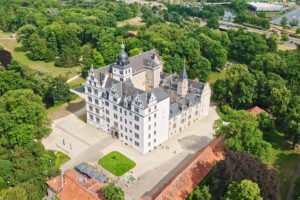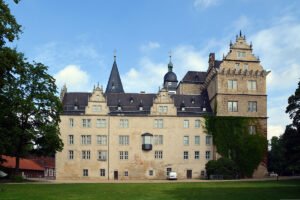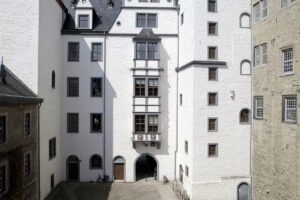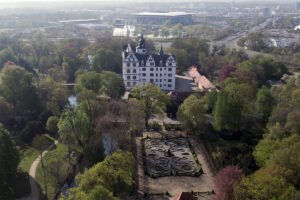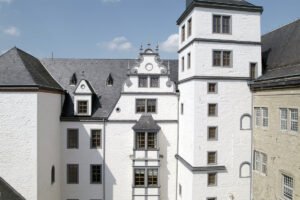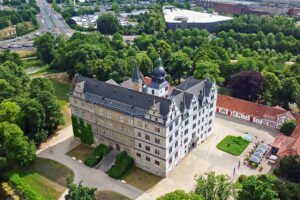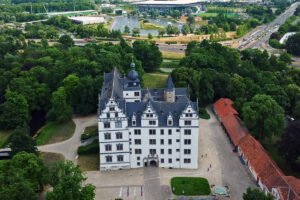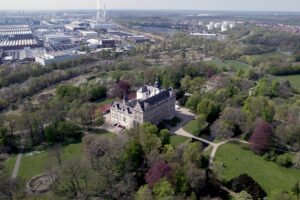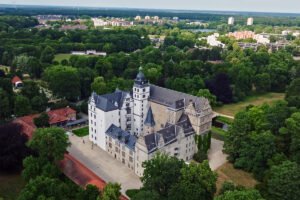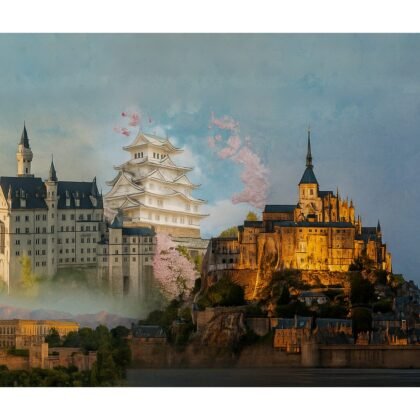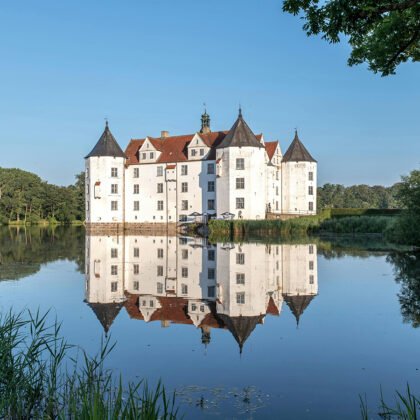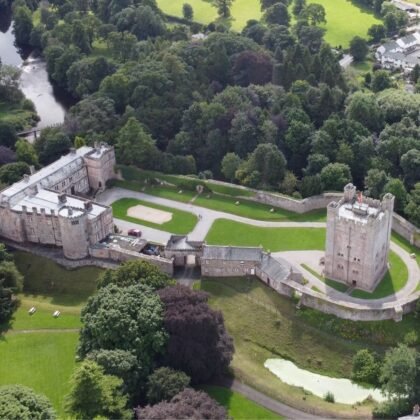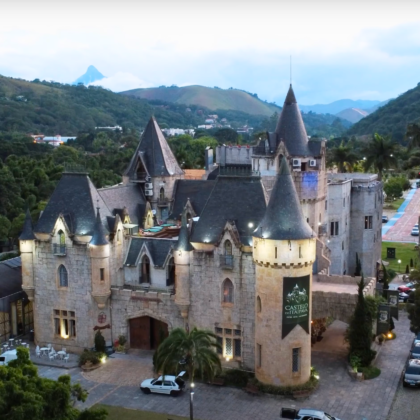Rooted in the meadows of Lower Saxony, Wolfsburg Castle (Schloss Wolfsburg) gave both name and nucleus to the modern city. What began as a stark medieval tower house grew into a four-winged Weser Renaissance palace—part showpiece, part stronghold. Today, its ornate gables, stout towers, and leafy parks frame galleries, museums, and concerts, inviting visitors to step easily between centuries in the heart of Wolfsburg.
Quick Facts
📍 Location: Wolfsburg, Lower Saxony, Germany
🏗️ Construction Period: 13th–16th centuries (rebuilt late 16th century)
🏰 Architectural Style: Weser Renaissance (North German Renaissance)
🎭 Famous For: Northernmost example of Weser Renaissance architecture; four-winged palace with medieval bergfried; lively cultural venue with galleries, museums, and events.
👑 Notable Figures: von Bartensleben family (founders); Counts of Schulenburg (later owners)
🏆 UNESCO Status: No
🌐 Official Website: https://schlosswolfsburg.de/
Map
Historical Context
Founded by the von Bartensleben family around the 13th to early 14th century, Schloss Wolfsburg began as a tower house that soon acquired moats and fortifications. The medieval bergfried, with walls up to three meters thick and almost no windows, still anchors the west wing. In the late 1500s the estate was transformed into a four-winged Renaissance palace around a courtyard, crowned with cross-gables, lucarnes, and striking towers—the Watchman’s Tower, Owl Tower, and the hexagonal Wendelstein staircase. After the Bartensleben line ended, the counts of Schulenburg took ownership in the mid-18th century. The city acquired the complex in 1962, restoring it as a cultural venue. As Volkswagen’s factory and the new city grew around it, the castle shifted from noble seat to civic stage, hosting galleries, museums, and open-air events.
Gallery
Visiting Information
🗓️ Best Time to Visit: April, May, June, late September, and October
🗺️ Location Perks: Set amid landscaped parks with baroque and English-style gardens, the castle sits close to Wolfsburg’s modern attractions, including the Autostadt. It’s easy to pair history with design, cars, and culture in a single day.
⏳ Estimated Visit Duration: Plan to spend 2–3 hours exploring the castle and its grounds.
💡 Visiting tips: Guided tours can sell out—reserve ahead and check opening hours. Scan the events calendar; many concerts and exhibitions are free or low-cost. Wear sturdy shoes for cobbles and garden paths.

